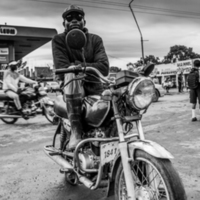
Danze: A Film by Yole!Africa
About the Collection
This collection documents the work of a community-based partnership between the Antislavery Usable Past project and Yole!Africa in Goma and Lubumbashi. The project is based on an archive of photography produced by the British missionary Alice Seeley Harris during her time in the Congo Free State in the late nineteenth and early twentieth century. The project has used the visual archive as a basis for working with young people to explore the history and legacies of colonialism during the time at which the Congo Free State was under the personal ownership of King Leopold II of Belgium.
Defining what the ‘antislavery usable past’ of these images is raises questions of power and representation. Who gets to decide? The writing of history is a powerful tool – who is included and excluded from the story, indeed, who gets to write it in the first place, is a reflection of the inequalities of the society within which that history is produced. Working with a colonial archive in Britain - a former centre of empire - raises issues about who gets to access history. For formerly colonised people their histories, or at least the portion of their histories relating to the colonial experience, are often found in the archives, museums, and art galleries of the former colonising power. Alice’s photographs, for example, eventually became part of the archive of the British and Foreign Antislavery Society, which subsequently became the present-day NGO Antislavery International. The archive is held at the Bodleian Library, University of Oxford. For people resident within the former spaces of empire, the physical impracticality of visiting the collection means a separation from the objects, documents, and images which represent their past.
This project offers a new way of working with colonial archives and in particular with the living communities whose past is present within these images of imperial exploitation. Working with these images within the communities that they represent is an important part of ceding control of the past. The aim is to make history useful and usable by telling the stories that matter to them. Returning photographs from Alice’s archive to the country in which it was produced allows Congolese people to decide for themselves what the usable past of the images might be. Developments in digitisation mean that an archive can be liberated from its physical location. With generous permission from Antislavery International, the Bodleian Library digitised the entire surviving collection of 509 photographs. Transformed from a rather unwieldy set of boxes into a hard drive, the collection gained the mobility necessary to work with partners in the Congo.
Through the critical and creative programme of education developed by Yole!Africa, Alice’s images have circulated among young people in Goma and Lubumbashi, who actively engage them when discussing their ideas about history, identity, and memory. Their powerful and insightful analysis of the images has given the photographs new meanings, which make them relevant for the present—not only in Congo, but also in former colonizing nations. Moreover, their artistic responses to the past demand that we reflect on the priorities motivating young people in formerly colonized countries and their critiques of contemporary society. Self-representation is central to the idea of freedom. Yole!Africa’s Executive Director Chérie Rivers Ndaliko has written about the power of self-representation stating that ‘When one’s story is one’s only possession of value, telling it becomes a matter of life and death… storytelling, more than taking arms, restores agency to those who have historically been the subject, indeed the collateral damage in this battle.’ With this in mind, we have actively sought the stories and opinions of those historically subjected to colonial domination, inviting them to amend historical records with their responses to colonial representations.
This collection contains a series of photographs which have been produced by young people in Goma and Lubumbashi in response to the original archive of Alice Seeley Harris images. They have been invited to recreate, contradict and recompose the images in relation to their own priorities. They explore themes of class, gender, race, sexuality, memory, labour, culture and history. These images formed part of an exhibition which took place at the Congo International Film Festival which was held at Yole!Africa in Goma in July 2018.
You can also view a film which has been created by Petna Katondolo Ndaliko which reflects on the relationship between history, memory and identity in relation to some of the issues raised by the Alice Seeley Harris archive and the histories it represents.
To access the original collection of photographs that this project engaged with you can search via the ‘Alternative Tag’ or you can click through the to ‘Alice Seeley Harris Archive’ and the ‘Congo Atrocity Lantern Lecture’.
A partner project was commissioned which explores similar issues in relation to the Congolese diaspora in London. You can access this material by clicking through to the collection ‘You Should Know Me: Photography and the Congolese Diaspora’.
The project has also collaborated closely with the Antislavery Knowledge Network, which is based at the University of Liverpool, and seeks community-led strategies for creative and heritage-based interventions in sub-Saharan Africa.
Copyright and takedown policy
Copyrights to all resources are retained by the Antislavery Usable Past project and Yole!Africa. The images and resources are available for educational and non-commercial use only. All efforts have been made to obtain copyright permission for materials featured on this site. If you are aware of instances where the rights holder(s) has not been given an appropriate credit, please let us know. If you hold the rights to any item(s) included in this resource and oppose to its use, please contact us to request its removal from the website.
Contact
Email: [email protected]
Acknowledgements
This project would not have been possible without the tireless work, energy, and commitment (both financial and intellectual) of Yole!Africa and its Artistic Director Petna Katondolo Ndaliko and Executive Director Dr. Chérie Rivers Ndaliko. Their support and enthusiasm has seen this project through its various phases and better partners could not have been asked for. Student ambassador Bernadette Vivuya has helped as both a participant and an organiser and has been a vital part of the project. We would like to thank Carlee Forbes (University of North Carolina) for her expertise on Congolese pre-colonial art and her help with the workshop in Goma. Our thanks also to Sammy Baloji and the team at PICHA! Gallery in Lubumbashi. Thanks to Dr Robert Burroughs (Leeds Beckett University) for offering important perspectives on Congolese resistance. Further thanks go to the Antislavery Knowledge Network, based at the University of Liverpool.
Further reading
Robert Burroughs, African testimony in the movement for Congo reform: The burden of proof (Abingdon: Routledge, 2018)
Marie Godin and Giorgia Doná, ‘“Refugee voices,” new social media and politics of representation: Young Congolese in the diaspora and beyond, Refuge, 32:1 (2016), pp. 60-71
Aubrey Graham, ‘One hundred years of suffering? “Humanitarian crisis photography” and self-representation in the Democratic Republic of the Congo’, Social Dynamics, 40:1 (2014), pp. 140-63
Osumaka Likaka, Naming colonialism: History and collective memory in the Congo, 1870-1960 (Wisconsin: University of Wisconsin Press, 2009)
Jane Lydon, ‘“Behold the tears”: Photography as colonial witness’, History of Photography, 34:3 (2010), pp. 234-50
Patrick Mudekereza and Allen F. Roberts, ‘Picha: The second Biennale of photography and video art Lubumbashi, Democratic Republic of the Congo October 2010’, African Arts, 44:3 (2011), pp. 68-75
Chérie Rivers Ndaliko, Necessary noise: Music, film, and charitable imperialism in the East of Congo (Oxford: Oxford University Press, 2016)
Mark Sealy, ‘Decolonising the camera: Photography in racial time’ (Unpublished PhD thesis, University of Durham, 2016)
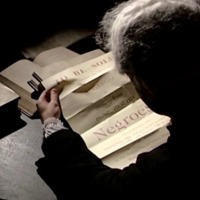
Clarkson
A group of Bristol Film and Video Society members wrote Clarkson, a 40 minute drama based on the life of the abolitionist Thomas Clarkson. The character study is set in Bristol in 1787, around the time that Clarkson was visiting English ports gathering evidence about the brutalities of the slave trade.
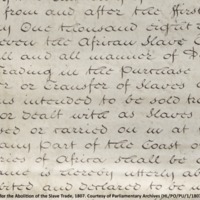
Sticks and Stones Project
The Sticks and Stones Project was led by Northamptonshire Record Office and Northamptonshire Black History Association. A group of students from Kingsthorpe Community College investigated slavery past and present, through historical workshops and a trip to the Houses of Parliament. The focus was on the history of slavery but also learning about forms of modern slavery such as sweatshop labour and trafficking. The students produced a short film and an exhibition to highlight the issues important to young people.
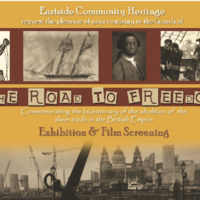
The Road to Freedom
Eastside Community Heritage worked with young people from West Ham and Stratford to explore the significance of the bicentenary within the context of their own history in London and in British history more widely. The Road to Freedom project was devised by the young people themselves, who gathered information from the Museum of London Docklands, the National Maritime Museum, the International Slavery Museum and the Birmingham Museum and Art Gallery. Their research led to a documentary-drama and an exhibition which toured venues in Newham, accompanied by discussion sessions led by the participants.
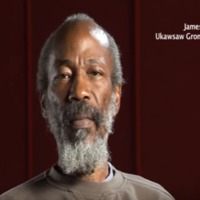
The Longest Journey: from Slavery to Abolition
The Longest Journey: From Slavery to Abolition was held at Epping Forest District Museum in October 2007. The exhibition also toured venues in the region, including the Cambridge and County Folk Museum. The exhibition examined clues in the collections of Essex museums and the Essex Record Office exploring the history of the slave trade and the abolition movement in Essex. A set of ‘Essex Links' panels revealed the Essex people and places involved, including the story of Anne Knight, Chelmsford resident and abolitionist. As part of the project, a film was commissioned for Black History Month 2007: ‘The Story of James Albert Ukawsaw Gronniosaw, an African Prince' is based on the autobiography published in 1774 by James Albert, a freed slave. Captured into slavery as a child in present-day Nigeria, once freed he travelled to England where he lived and worked in Colchester. The film features actor Shango Baku and was produced by Harvest Films and commissioned by Epping Forest District Museum, Museums in Essex Committee and Renaissance in the Regions.
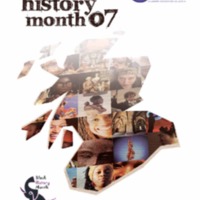
Black History Month 07
Glasgow Anti Racist Alliance (GARA) organised a programme of events for Black History Month in October 2007 with a particular focus on the bicentenary and engaging people in the importance of Black history. GARA were supported by Glasgow City Council Education Services and Culture and Sport Glasgow. Events included talks at the Hunterian Museum, interactive exhibits at the Glasgow Science Centre and film showings, capoeira and African drumming workshops at the Glasgow Film Theatre. Sugar & Spice Sunday on 14 October marked the bicentenary with a festival of commemoration and celebration through films and events. GARA also hosted Black History Tours around Glasgow to explore the city's hidden slavery history.
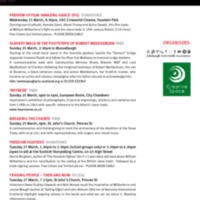
Marking the 200th anniversary of the Abolition of the Slave Trade
A programme of events to mark the bicentenary was organised by Edinburgh Inter-Faith Association. This included a slavery walk in the footsteps of Robert Wedderburn, a commemoration and thanksgiving service at St John's Church in Edinburgh, and a debate and discussion on the theme 'Trading People - Then and Now'.
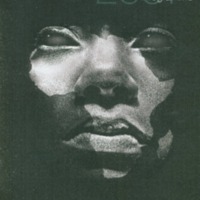
2007 Bicentenary for the Abolition of the Slave Trade Act at the National Maritime Museum
The National Maritime Museum marked the bicentenary with a range of initiatives and events including a new exhibition, a film season, poetry, music, debates, and new publications. A new permanent gallery opened at the museum in winter 2007 exploring Britain's Atlantic empire. A catalogue of slavery-related images, artefacts and documents from the collections of the museum, 'Representing Slavery', was published. The museum also devised a transatlantic slavery trail around Greenwich.
The National Maritime Museum hosted a number of events throughout 2007. The theme of the weekend 23-25 March was 'And still I rise', marked with a series of activities, performances and discussion. On August 23, International Day for the Remembrance of the Slave Trade and its Abolition, the ‘Freedom Festival: Contemporary Commemoration’ event saw a programme of creative events and performances exploring themes around the heritage of enslavement. The museum also offered a range of learning experiences based on its collections. For example, in November, a study session, 'Roots of Resistance: Abolition 1807' examined the roots of resistance and the abolition movement through talks by curators and contemporary artists. Activities for families were based on themes of freedom and carnival. 'The Big Conversation 2007' was a programme of debate and showcasing of diverse projects undertaken by students around the country, organised by the Understanding Slavery Initiative and the Department for Children, Schools and Families.
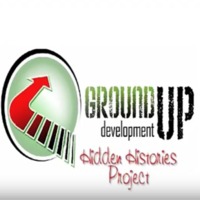
Hidden Histories
This project worked with young people from Lambeth, South London, to examine the history of West Africa, its peoples and their rich heritage, culture and traditions, as well as the impact of slavery and the African diaspora. Using film production, creative workshops, and visits to heritage sites, the emphasis was on the positive impact of African history and its effect on the aspirations and self-esteem of young people.
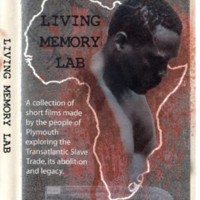
Living Memory Lab
The Living Memory Lab was a two-year project in which people from local communities of Plymouth made three-minute films on the subjects of slavery and abolition and local connections to the slave trade. A series of short training courses in basic film-making were offered as part of the project. The project was a partnership between Plymouth and District Racial Equality Council, BBC South West, the community arts agency Creative Partnerships, in collaboration with Plymouth City Museum and Art Gallery. The DVD was made freely available for use as a teaching aid and community resource.
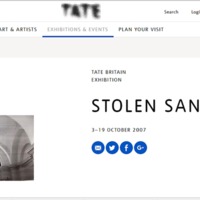
Stolen Sanity
In 2007 the artist Faisal Abdu'Allah was commissioned by Tate Britain to work collaboratively with a group of young people from Park High School in Harrow and St George's Roman Catholic School in Westminster to explore ideas related to the commemoration of the 1807 Abolition Act. The group engaged with creative research and artistic processes to produce narratives capturing their personal viewpoints on the themes of freedom of expression, liberty, revolution and slavery. The project Stolen Sanity resulted in a series of large scale photographic portraits that were displayed in the main galleries of Tate Britain. The project integrated the factual historic time line of Tate Britain's display, 1807: Blake, Slavery and the Radical Mind, with fictional personal reflections through audio and visual art.
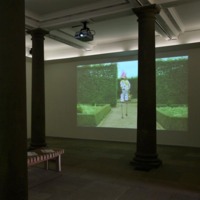
Crop Over
2007 saw a number of different projects taking place at Harewood House in West Yorkshire, home of the Lascelles family. The bicentenary was used as an opportunity to explore the family connections with the transatlantic slave trade and the sugar plantations of the West Indies.
The art installation Crop Over by British Afro-Caribbean artist Sonia Boyce was shown in the public galleries at Harewood House throughout 2007. Crop Over is a Barbadian festival which has evolved from a celebration by plantation slaves of the end of the sugar crop. Sonia Boyce's two-screen film visually depicts the traditions, histories and cultural practices of this festival, which culminates with a carnivalesque parade known as Kadooment. It also responds to the history of Harewood House. The Lascelles family association with Barbados began in the 17th century when Edward Lascelles and his son Daniel were based in Bridgetown, Barbados.
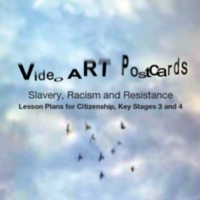
Video ART Postcards
To mark the bicentenary, Manifesta (a not for profit company delivering projects addressing cultural diversity) and the Runnymede Trust (an independent policy research organisation focusing on equality and justice) joined forces to launch a youth and digital media initiative, Video ART (Anti-Racist Trails) Postcards. The project explored connections between slavery, colonialism and contemporary issues of racism and related injustice. In the summer of 2007, two groups of teenagers aged 14-19 from the London Borough of Newham participated in workshops to uncover sites related to historical racism and anti-racism in the West India Docks area of London, assisted by video artists and historians. Using video for self-expression, each participant interpreted this history and heritage by producing a short personal video or 'postcard' - there were 33 videos in total. The videos were made available on an online resource, and a Teacher's Guide was created to be used alongside the website.
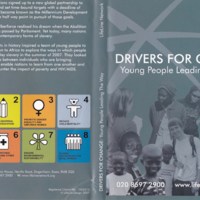
Drivers for Change: Young People Leading the Way
Drivers for Change was a project led by LifeLine Network, a network of partnerships between community organisations and NGOs with a common aim to fight poverty. In Summer 2007, a team of young people visited Zimbabwe, Sierra Leone and Dominica to explore the ways in which people were combating modern slavery. The trip was inspired by two significant points in history: the 1807 Abolition Act, and the half way point of the Millennium Development Goals, for which 189 nations signed up to a new global partnership to reduce extreme poverty. While in Africa, the group looked at how global partnerships between individuals bring communities together, and assist in countering the impact of poverty and HIV/AIDS. A film was produced documenting the trip, launched at an event was held at the Palace of Westminster.
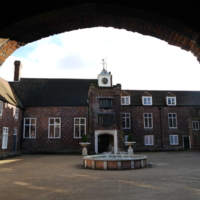
Faces of Freedom: Hammersmith and Fulham and the Slave Trade
The Museum of Fulham Palace is housed in the former palace of the Bishops of London, and former home of Bishop Porteus, the leading advocate for abolition within the Church of England in the late 18th and early 19th centuries. The Faces of Freedom exhibition featured Porteus alongside other individuals associated with slavery and abolition who had links with the area. The abolitionist Granville Sharp lived and is buried nearby, while Crisp Road was named after the slave trader and bead manufacturer Sir Nicholas Crisp. The exhibition included glass beads (very likely produced to be used for barter in Africa) excavated by the Museum of London on the site of Crisp's Hammersmith home. Also featured was the story of Ellen and William Craft, fugitive slaves from Georgia who made Hammersmith their home, and the contributions of local residents Marcus Garvey, Jamaican Pan-Africanist, and nurse Mary Seacole. The exhibition included video footage and posters relating to slavery and freedom, created by pupils from the nearby Phoenix High School.
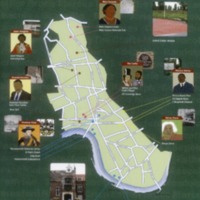
Remembering Slavery in Hammersmith and Fulham
Hammersmith and Fulham Urban Studies Centre is a voluntary educational organisation which offers opportunities to children and young people to learn about the local urban environment. The online curriculum resource 'Remembering Slavery' aimed to inform teaching and learning about the transatlantic slave trade by tracing the links of people and places in Hammersmith and Fulham to enslavement, the slave trade and its abolition. It explored the lives of enslaved Africans and their descendants, detailing their experiences and contributions in the local area. The resource aimed to encourage teachers to develop a locally-based Black history focus across curriculum programmes. It consisted of resource guides and animated films across four broad time frames: pre-Victorian, Victorians, Britain in the 1930s and 40s, and Britain since 1948.
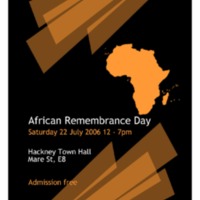
The Ligali organisation, 2007
Ligali is a Pan-African human rights organisation that challenges the misrepresentation of African people, culture and history in the British media. It produced various responses to promote the African perspective of the 2007 bicentenary, including their 'Declaration of Protest to the 2007 Commemoration' expressing dissatisfaction with much of the terminology and focus of the 'official' commemorations. Their particular focus was on the ‘Maafa’, derived from the Kiswahili word meaning ‘great disaster’, and referring to the ongoing impact of enslavement and colonialism for African peoples. The publication ‘Addressing Maafa denial and slavery apologists’ was a guide to promoting the truth about the Maafa from an Africentric position.
‘Maafa: Truth 2007’ is a documentary film directed by the Ligali founder, Toyin Agbetu, and produced by Ligali’s then head of media affairs, emma pierre. The film confronts some of the myths about British slavery, featuring contributions from community activists, project workers, teachers and the African British business community. The film was screened at various events, including African Remembrance Day at Hackney Town Hall in 2006. Ligali’s ‘Freedom Fighter’ stamps were designed by Emma Pierre-Joseph as a response to the Royal Mail’s publication of six stamps to mark the bicentenary. ‘The Walk’ is a documentary record of Toyin Agbetu’s protests at the service at Westminster Abbey to mark the bicentenary on 27 March 2007.
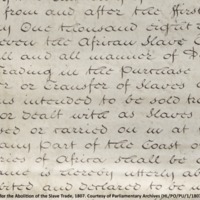
BOUND
Curated by Predrag Pajdic, BOUND was an exhibition of works by international contemporary artists representing personal perspectives on the physical and psychological impact of slavery on humanity, in historical and modern contexts. BOUND incorporated archival material, conceptual work, photography, video, live art performance, interventions and installations. It was a partnership project between the Open Eye Gallery, FACT (Foundation for Art and Creative Technology) and Tate Liverpool. The exhibition opened at Open Eye Gallery and then ran at various venues across Liverpool. Associated events included open table discussions, talks and film screenings.
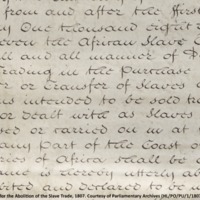
Inhuman Traffic: The Business of the Slave Trade
An exhibition at the British Museum exploring how the transatlantic slave trade functioned. The display examined the commodities involved - tobacco, guns, textiles, sugar, rum - and the ways in which Africa, Europe and the Americas were linked in a global trade network. The exhibition also looked at resistance leaders including Toussaint L'Ouverture, Olaudah Equiano and Nanny of the Maroons, and their struggles to end enslavement. The exhibition was accompanied by a varied public programme at the museum exploring the legacy of the slave trade as part of the Atlantic Trade and Identity season, featuring film screenings, panel discussions, seminars and lectures.
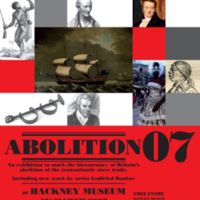
Abolition 07
Hackney Museum's Abolition 07 exhibition told the story of British involvement in the transatlantic slave trade, the resistance to it, and its abolition, and in particular emphasised the involvement of Hackney's residents in the abolition movement. The display included new artwork by Godfried Donkor in collaboration with young Hackney artists. A film of interviews with Hackney residents, Hear My Voice, was produced. Over 1200 children from Hackney Primary Schools took part in poetry workshops at the museum with poets Adisa and Baden Prince. Their poems and responses were published in the booklet 'And Still I Rise'.
The research into Hackney's connections to the transatlantic slave trade continued in 2013-2015 with 'Local Roots / Global Routes', a collaborative project between Hackney Museum and Archives and the Legacies of British Slave-ownership project.